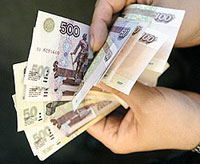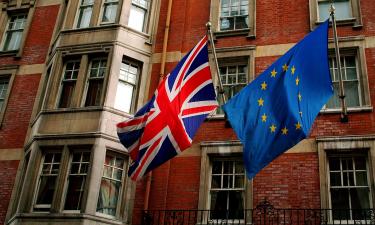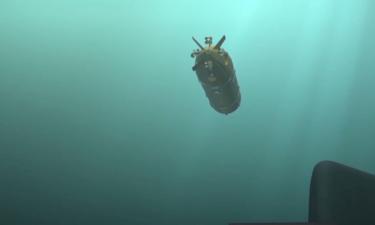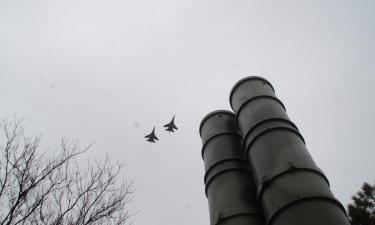Russia's Economic And Financial Meltdown Continues Apace
By Edward Hugh

Russia's foreign-exchange reserves have been now been declining very rapidly since mid August, and as the money goes so does the faith that the large stock of reserves the country built up during the boom times would be sufficient to see them through any downturn in energy prices. As the money leaves, so it seems does the decade of economic growth and stability which they symbolised. Indeed so rapid has been the decline that Russia's international reserves, which are the third-biggest after those of China and Japan, have now fallen $161 billion, or 27% percent, since 8 August last, and decreased by $17.9 billion to $437 billion in the week to 5 December. Investors have now pulled $211 billion out of the country since August, according to estimates by BNP Paribas.
But just how difficult managing this process is proving to be was illustrated yet again this morning as Russia’s central bank found itself forced to accept a further devaluation in the ruble - for what is now the second time in a only a week - subsequent to which the ruble fell as much as 1.3 percent (to a four-year low of 37.5015 per euro) as Bank Rossii widened the trading band against the basket of dollars and euros used by the bank as the measure for attempting to manage the exchange rate.
Russia has now used some 27 percent of its reserves in these attempts to stem what has now become a 16 percent decline in the ruble following a 69 percent drop in the price of oil and last weeks decision by credit ratings agency Standard & Poor’s to cut its Russian credit rating on for the first time in nine years.
Thus over at Bank Rossii they have been having their work cut out "fexibilising" the trading band, and it this flexibilisation process that has now allowed the ruble to fall against its target exchange rate against a basket of currencies by 8.6 percent, down further from the 7.7 percent level facilitated last week and the 3.7 percent one of a month ago. Thus the currency has now fallen a net total of 5.9 percent against the basket in the series of six "adjustments" to the trading band implemented since 11 November. However this "slow and steady" approach to devaluation is creating uncertainty, as well as fomenting a loss of confidence with Russians withdrwaing a total of 6 percent from their ruble accounts in October alone, the fastest rate of withdrawal since Bank Rossii started collecting this data two years ago, while foreign currency deposits rose 11 percent. Thus instead of reinforcing confidence in the monetary regime, the slow, step-by-step adjustment of the nominal exchange rate may be perpetuating a steady stream of deposit withdrawals and dollar purchases, and some evidence for this can be found in November's 5.9 percent contraction in the money supply.
Apart from the financial turmoil, Russia's economy is really reeling under the weight of the sharp drop in crude prices, and the price of Urals crude, Russia's main export blend, is currently trading at around $44.13 a barrel, down 69 percent from the July peak, and well below the $70 average required to balance the country's 2009 budget.
GDP Growth Slowing Rapidly
It is hard to get a fix at the present time on what Russia's growth rate will look like in 2009, and estimates vary widely. Deutsche Bank recently cut its Russian growth forecast to 1 percent for next year, down from an earlier 3.4 percent, while the World Bank last month forceast a slowdown to 3 percent from what has been an average expansion of 7 percent a year since 1999. At the bottom end of the forecast range we have Oleg Vyugin, chairman of MDM Bank and a former central banker, who suggests the economy may contract by as much as 4% if the prices of raw materials exports do not recover. My own feeling is that the final figure may well be much nearer to Vyugin's estimate than to the World Bank one, especially if we don't get a strong rebound in commodity prices and given the sharp contraction in non-energy industrial output.
Analysts an OAO Sperbank have gone one step further and come up with two possible scenarios for possible impacts of the economic slump on property prices. For the first (or mild case) scenario they postulate a 2.5-3.5% growth in GDP, 11% inflation and a 30 ruble per dollar exchange rate in 2009. In this case, the bank anticipates a drop in Moscow real estate prices of 34.4% in ruble terms and 46.6% in dollars. On the second scenario GDP stagnates (or even contracts by up to 2.5%), there is higher inflation and an even larger devaluation of the ruble against the dollar. On this (worst) case scenario the Bank suggests that Moscow property prices would plummet by 38.1% in rubles and 59.6% in US dollars. You have been warned!
Click here to read the full text of the article.
Subscribe to Pravda.Ru Telegram channel, Facebook, RSS!





